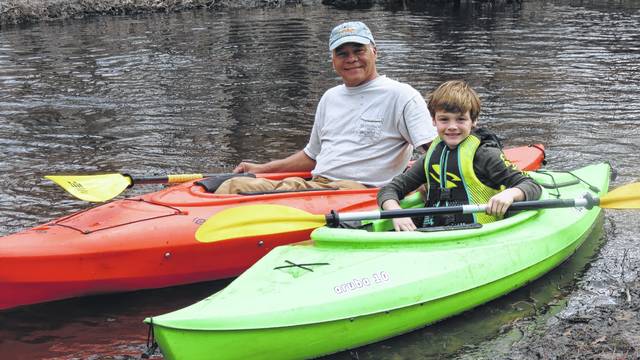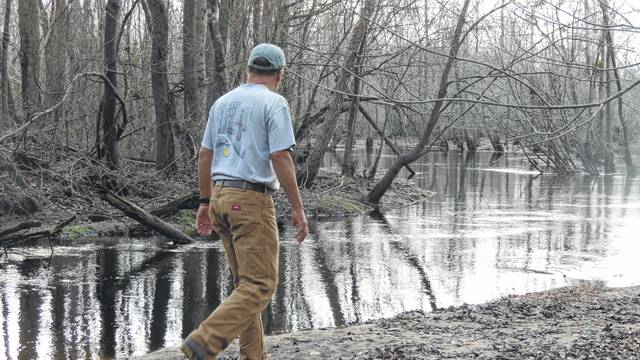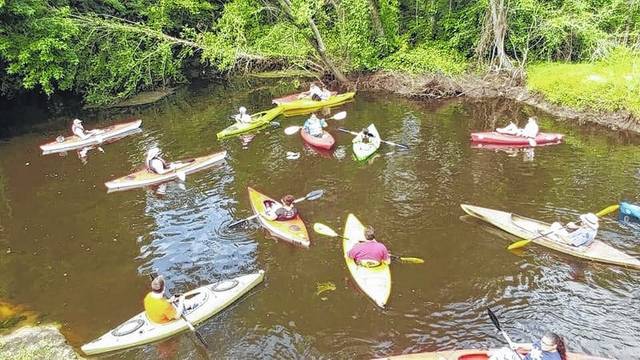Sampson County native Philip Bell has spent countless hours on the Great Coharie River — during both his childhood and adult life.
Bell is now a part of the Great Coharie River Initiative, a restoration effort that has the hopes of creating a navigable pathway through the upper Great Coharie, a part of the river just off U.S. 421 that runs through the heart of Coharie land.
“When I grew up, the river was open and you could see down through the woods for a long distance,” Bell said, sharing the fond memories he had as a child going to the river for fun, food and community events.
At one time, the river served as a lifeline for the Coharie people, once supplying sustenance for the tribal community. Growing up, Bell said the river was open, flowing from just outside of the Newton Grove area and dumping into the Black River in southern Sampson County and eventually into the Cape Fear River. The banks of the river were lined with Pin Oaks, Water Oaks and Chestnut Oaks and served as a source of food for wild game.
Recently, Bell was invited to speak to a group of students, staff and alumni at the University of North Carolina at Chapel Hill, a university that is working along with Bell and others towards rebuilding the efficiency of the river, about the river and how it was once used as a food source for the community.
“After speaking with the group, the university provost approached me and expressed his interest in coming down and taking a ride on the river,” Bell said. “I truly feel he has a interest in the Coharie people and the river.”
James W. Dean Jr., executive vice chancellor and provost for the university, is scheduled to visit with Bell and other members of the Coharie Tribe and take a ride down the river Saturday. During his visit, Bell said he will guide him on a tour of the river and it’s banks, giving the provost a look at what work has been accomplished and what remains to be done.
“This is a great opportunity for the Coharie community and the tribe,” Bell explained.
The river’s abundant supply of food, wood and recreation changed when the beaver population grew out of control nearly four decades ago.
In the early 1970s, beavers began to over populate the river and it’s surroundings. Over time, the population continued to grow and the beavers became a nuisance. For a few years, the county had a bounty on beavers, but that didn’t last long and the number of animals and dams continued to grow.
A trapper was hired by the county, and that, Bell said, helped keep the numbers down, but in time the population outgrew the number of beavers being trapped and dams being destroyed. The fur trade industry waned, and with the expanding population the river was overtaken by beavers and their homes.
“Over time, the river became a beaver haven,” Bell said. “It wasn’t being used by the community anymore and what I once knew as being a part of my childhood was no longer a part of anything.”
Following Fran and Floyd, FEMA came in and cleaned out some of the river’s area, but nothing close to what it was just 20 years before. In 2014, the United States Forestry Service began helping the Native Americans manage forest land, and the river was part of that area.
“The damage from the storms created havoc on the river,” Bell explained. “There was a total annihilation of the forest canopy.”
In 2015, the Coharie Tribe became part of the Great Coharie River Initiative, a restoration effort that had the hopes of creating a navigable pathway through the upper Great Coharie, a part of the river just off of U.S. 421 that runs through the heart of Coharie land.
Members of the Coharie Tribe, friends, community members and members of the Friends of Sampson County Waterways joined and cleaned nearly two and half miles of the river. In 2016, a grant was awarded and more equipment was purchased, allowing for another two and a half miles of the river to be cleared.
According to Bell, from Five Bridge Road to an area past Keener Road was clear and open for the community, tourists, adventurists and anyone wanting to take a trip down the river. The Great Coharie River spans about 43.5 miles and eventually, Bell said he would like to see the entire area clear, so that someone could easily go from Sampson County to the coast via the water.
All of the hard work and manpower was erased last fall when Hurricane Matthew dumped inches of rain and toppled trees, leaving the river in the condition it was in just a few years earlier.
Bell, along with other members of the Coharie community continue to work to restore the river to its original splendor.



